|
MY ANTIGUA FUN FACTS & NATIONAL SYMBOLS OF ANTIGUA |
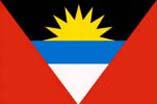 |
The red colour
symbolises the lifeblood of slave forefathers and the dynamism of the
people. The seven point Golden Sun symbolises the dawn of a new era. |
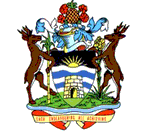 |
| Devised by R. Samuel in 1966 |
Our National Coat of Arms |
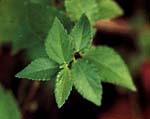 |
Our National Weed is the Widdy Widdy (Corchorus siliquosus L) which belongs to the Tiliaceae family. The bush was used by sugar workers to supplement their food supply when they went on strike for better wages and conditions in 1951. With a little cooking, the weed rapidly softens and becomes sticky. The flavour is good and the protein content is excellent. |
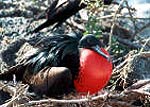 |
Our National Bird, (Fregata magnificens L) is also known as Man-o'-War or Weather bird. Relatives of the pelicans, the male is glossy black. To attract females, he blows up his scarlet throat. The females have white breasts. Frigates weigh about three pounds, have a wing span of 8 feet, a deeply forked tail and fly about 22 (mph). |
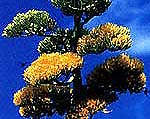 |
Our National Flower, the Dagger Log's (Agave karatto Miller)
has yellow flowers rising from the large rosette formed by the Agave plant. |
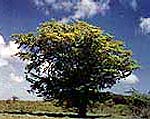 |
Our National tree is the Whitewood (Bucida buceras/font L), a wide-spreading ornamental shade tree with nearly horizontal branches, which is part of the Combretun family and related to the mangroves and almond trees. Its timber is heavy and hard and was once used for making gun carriages. Because of its "black centre," the tree was once known as "Black Gregory." |
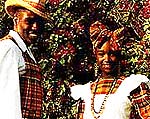 |
Our National Dress was worn by market vendors and cake makers in Antigua and Barbuda, circa 1834. (This version was designed by native Antiguan Heather Doram.) "National Day" is when many Antiguans proudly wear their national clothing, serve or eat local food and drinks, and attend national prayer services. (Photo by Timothy Payne). |
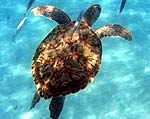 |
Our National Sea Creature, the Hawksbill turtle, is distinguished by its narrow pointed beak and often jagged edge on both sides of the shell, (Eretmochelys imbricata) was originally perceived as a gift from Caribs, Arawaks and archaic gods. Once actively hunted for its highly valued "tortoise shell," the Hawksbill is now on the endangered list. |
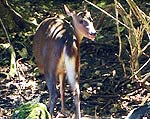 |
Our National Animal is thought to have been introduced to Antigua and Barbuda by the Codringtons in the early 1700s, the European Fallow (Dama dama dama) deer live and breed happily on Barbuda and Guiana island. They do not live on any other Eastern Caribbean island. There are two varieties, black and common. |
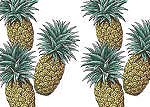 |
Our National Originally introduced by the Arawakan speaking people, the Antiguan Black Pineapple (Ananas comosus) was used for making twine, cloth and for healing purposes. Today it is mainly grown on the south side of Antigua. |
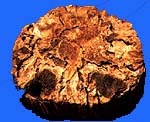 |
Our National Stone - Wood becomes petrified (fossilised) when buried for extended periods of time in mud containing volcanic ash. Antigua's petrified wood, belongs to the Oligocene period of geological time. Petrified wood fragments may still be found scattered throughout central Antigua. |
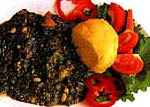 |
Our National Pepperpot was first used by the Amerindians as a means of preserving food. Today it is stew typically containing squash, spinach, eggplant, peas, pumpkin, ochroes, salted meats and dumplings. Fungee is a paste-like ball of cornmeal and ochroes. |
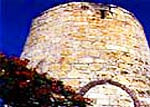 |
Our National Historic Symbol is the first mill said to have been built at Claremont by the Piggotts from Ireland. By 1705, there were 34 mills in operation. More than 114 sugar mills still stand today as silent witness to a bygone era when sugar was "king." |
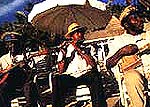 |
Our National Members of the Rio Band play music typical of Antigua's past. The fife band usually consists of a fife (a small flute which plays the diatonic scale and is often made of bamboo), a grudge or grater, a boom pipe (as bass), a homemade Yuca-lili (ukulele) and a traditional guitar. |
National Anthem
|
|
Fair Antigua and
Barbuda! |
Raise the Standard! Raise it boldly! |
|
God of Nations, let Thy Blessing |
National Motto:
"EACH ENDEAVOURING, ALL ACHIEVING,"
|
|
Fun Facts The words ‘hammock’, ‘hurricane’, ‘tobacco’, ‘barbecue’ and ‘canoe’ all derive from the Taino language, spoken by the people who originally lived in Jamaica? Antigua and Barbuda are best visited during the cool and dry winter months (mid-December to mid-April), the peak tourist season. In January and February, the coolest months, the average daily high temperature is 81°F (27°C). The islands get even hotter in the summer. In July and August, the warmest months, the average daily high is 86°F (30°C). It's less dry in the autumn (September to November), during the rainy season, though Antigua's fairly dry year-round. Carnival, Antigua's big annual festival, is held from
the end of July and culminates in a parade on the first Tuesday in August.
Most Carnival activity takes place in St John's. Calypso music, steel
bands, masqueraders, floats and street 'jump-ups' are all part of the
celebrations. If you have enough energy by the last day to be up and
dancing in the streets at 4am you can jump up during J'Overt, the
climax of Carnival. The other major musical event is the annual
Antiguan Jazz Festival, which takes place in October. |
Why not visit one of our other Holiday destinations
ANTIGUA
BARBADOS
CORFU
CYPRUS
FLORIDA
GOSPORT
GRENADA
ST KITTS
ST LUCIA
TOBAGO
KENYA
